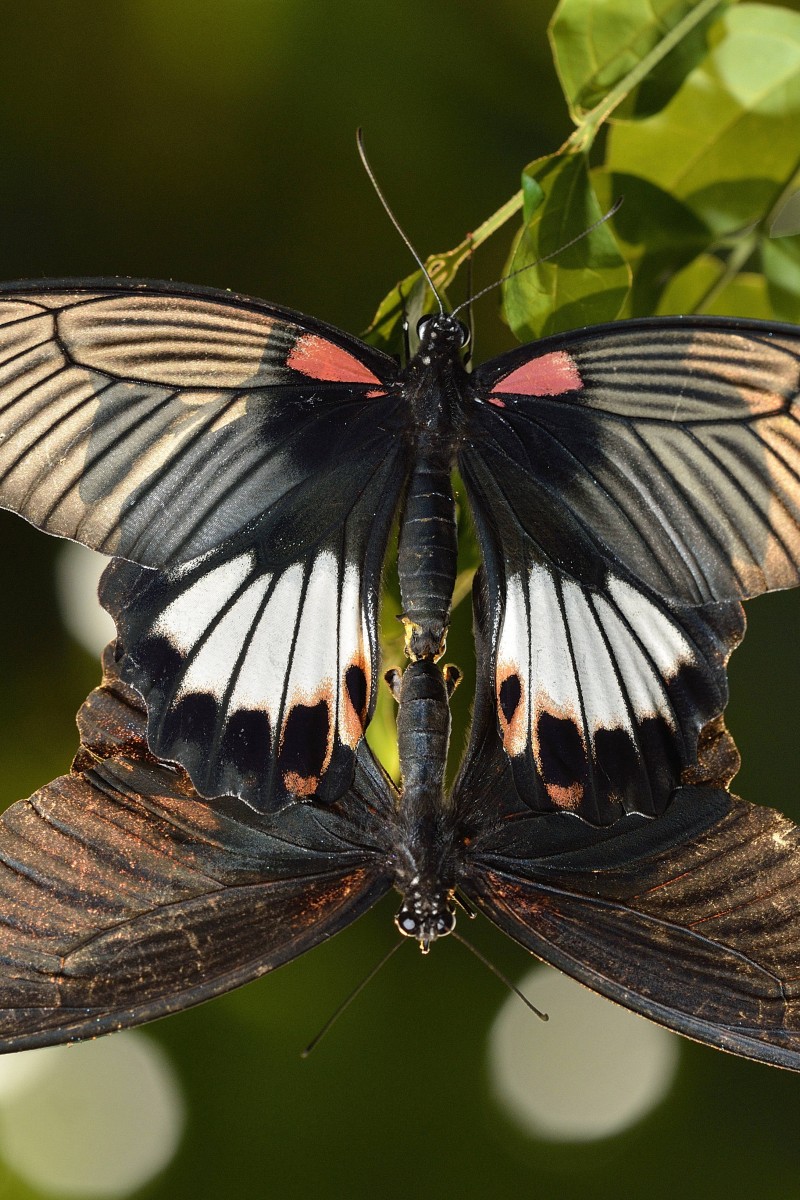
From creepy, crawly caterpillars to chrysalis and beyond, YP cadet Kira Lai takes a look at the butterflies you'll find flitting about in Hong Kong
 A female Great Mormon (top) mating with a male Great Mormon.
A female Great Mormon (top) mating with a male Great Mormon.Did you know that Hong Kong is home to hundreds of butterfly species? There are around 2,153 types of butterflies in China, and 11 per cent of them are found in Hong Kong.
Our warm and humid weather creates the perfect natural environment for butterflies. Thanks to our mild climate, they are here all year round. Next time you go for a walk in a wooded area, take a look around and you may spot some.
The most common butterflies in Hong Kong are the Indian Cabbage White and the Great Mormon. From its name you can guess that the Indian Cabbage White has a creamy white colour, but there are subtle black spots on its wings, along with black antennae and greenish-grey hair on its head and thorax. This butterfly can be found in farms any time of the year.
Even though the Indian Cabbage White is one of the most common butterflies in Hong Kong, it is difficult to spot because of its relatively small size. Most often, the ones that we see is from the genus Papilio, because they are larger.
The Great Mormon is a large butterfly which is commonly found in Hong Kong during all seasons. Their wings are mostly black, but the male's wings have blue streaks on them and the female's wings have greyish-white or red streaks.
Looking out for these insects may seem easy, but it is extremely difficult to identify a specific type of butterfly as many of them look similar. "If you are interested in butterfly watching in Hong Kong, a good place to start is at the host plant," says Gigi Lai, an experienced lepidopterist, or butterfly expert. The host plant is where female butterflies lay their eggs so the caterpillars can feed on its leaves.
Most Great Mormons will lay their eggs on the underside of the leaves of a citrus tree, so that the eggs can be protected from sunlight and predators. However, some butterflies lay their eggs on branches or even flowers. Depending on the time of year that you check out the host plant, you may see females laying eggs, or even see a new butterfly emerging from its chrysalis. A chrysalis is the hard, protective case in which a young insect turns into an adult with wings.
Butterflies are very important to the ecosystem. One of the most obvious benefits of butterflies is the pollination of plants, but they help in many other ways. For example, we can tell a lot about the environmental health of an area by observing the population of a butterfly species. This is because caterpillars are extremely sensitive to any change in their ecosystem. They have to feed on specific plants to survive, and if those plants are removed or destroyed, then the caterpillars can't survive long enough to form a chrysalis.
Most butterflies lay about a few hundred eggs. However, only one or two of them survive the transformation from caterpillar to butterfly. So, a slight change in the environment will have a big impact on the population of butterflies.
In recent years, many of the butterfly habitats in Hong Kong have been destroyed due to illegal reclamation of land and excessive use of pesticides.
Dr Lee Ping-chung, former chairman of Hong Kong Lepidopterists' Society, says that legal action should be taken without delay to stop these destructive acts, and more green areas should be earmarked as national parks.
However, he is pessimistic about the government's ability to tackle the problem. "For now, protecting the existing green environment is the best way to maintain the biodiversity of butterflies," says Lee.